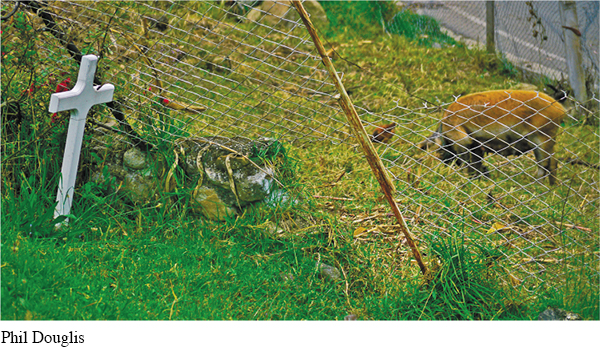1.7 A MODEL ANALYSIS
It’s time to try your hand at this analysis process. Remember, whether it’s analyzing a poem, teasing apart an argument, or thinking about an advertisement, the basic thought process remains the same:
Observe
Identify patterns
Draw conclusions
Let’s try the analysis process with a photograph called Life Goes On, Checa, Ecuador, 2011.

For observation, you probably paid close attention to the pig and the cross. You likely also noticed that there is only a falling-
down chain- link fence that separates the pig from the cemetery. Hopefully, you also considered the title of the photograph: Life Goes On. In trying to recognize the patterns, you probably saw that the pig and the cross are set up as opposites—
one represents death, the other is alive, and you might have been curious about why the photograph includes both a farm and a cemetery. In drawing a conclusion about a text, you generally will ask yourself, “What meaning is the author/photographer/artist trying to communicate to the audience?” In analyzing this photograph, you might conclude something similar to what the photographer, Phil Douglis, says about his work: “The image symbolizes the fact that life continues to be lived, even in the constant presence of death itself.” What’s another conclusion you might draw from this image?